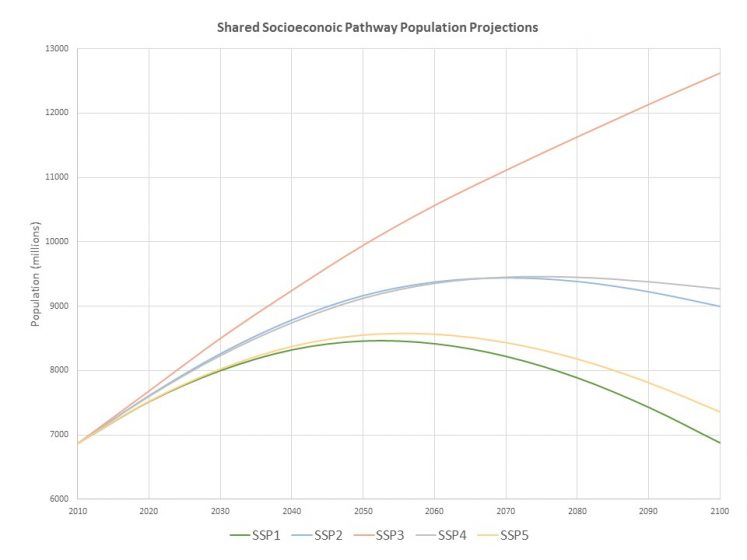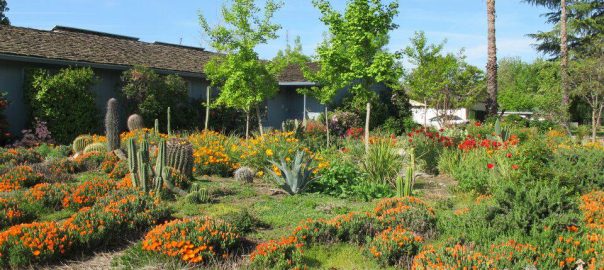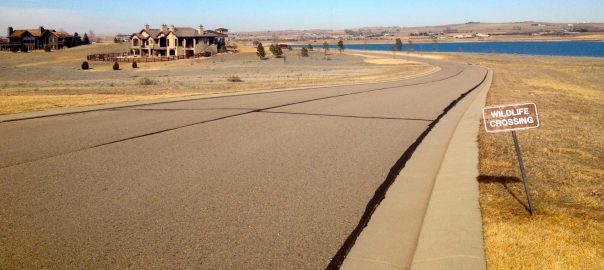Investing in the world’s people, regardless of the color of their skin or the accident of where they were born, means that everyone—poor and rich, American or otherwise—can have markedly better lives in the future.

But environmentalists, and indeed the President, are missing the biggest, most serious, and longest lasting, unintended consequence of the Trumpian agenda: he and his nationalist, anti-immigrant allies in Europe and elsewhere are putting the world on track to nearly double the human population by 2100.
Demographers have an open secret. The global population growth rate is slowing; in fact, it has been dropping since the 1960s. Most of the advanced economies of the world (Europe, the United States, Canada, Japan, Australia and New Zealand) have population growth rates that would be flat, in decline, or almost so, were it not for immigration.
The world’s most populous nations, China and India, are well on the way through the so-called “third phase of the demographic transition”, where fertility rates fall to balance mortality rates already brought low by modern medicine. As populations urbanize and gain access to the global economy, busy young adults have fewer incentives to raise large families. Women with more income tend to have more rights and more control of their lives and bodies. Family planning and education are easier to access in urban areas than rural ones. Urbanization is the prime mover of these changes, simultaneously increasing incomes and decreasing the marginal cost of providing public services.
Sub-Saharan Africa is the only region of the world today where mothers on average have more than four kids over a lifetime, rather than the 1.9 kids for an American mom or 1.5 for a European one. Even in Africa, total fertility rates have dropped 25 percent since 1960. Yet many African cities continue to under-deliver the economic and demographic benefits other regions have seen, hampered as those cities are by corruption and poor governance.
The world population continues to grow because legions of youngsters are just now entering their child-bearing years, but demographers no longer debate if the global population will stabilize. The questions now are: When will it peak? And at what height?
To suggest such answers, an interdisciplinary group of scientists has been working to explore, in the deathless prose of the science, “shared socioeconomic pathways” (or SSPs) to test how policies regarding healthcare, education, trade, immigration and urban development might affect long-term demographic outcomes. They developed scenarios of national and international policies that might plausibly take root in the twenty-first century (references are included below). No one knows what the future will hold and so these different alternatives are not predictions so much as thought experiments with data. Nevertheless the results are startling. They work out five paths, but I think here we should focus on the two most extreme.

SSP1 (“The Green Road”) is the most optimistic. It models a world that invests in its people through cities, healthcare, and education, while adopting generous trade and immigration policies. The developed world helps the developing world. Urbanization leads to smaller families and better investments in every child. This pathway leads to a peak population of 8.5 billion around 2050, followed by a slow and natural decrease, such that by century’s end, the world population is a bit less than today.
SSP3 (“The Rocky Road”) tests out Trump world. As Brian O’Neill and colleagues wrote in Global Environmental Change:
A resurgent nationalism, concerns about competitiveness and security, and regional conflicts push countries to increasingly focus on domestic or, at most, regional issues. This trend is reinforced by the limited number of comparatively weak global institutions, with uneven coordination and cooperation for addressing environmental and other global concerns. Policies shift over time to become increasingly oriented toward national and regional security issues, including barriers to trade…
The upshot of SSP3 is a world of 12 billion people by 2100 with the peak still to come in the 22nd century.
Why does nationalism lead to a more crowded world? First nationalists want to shut down immigration. Migrants who come from faster growing regions to slower growing ones tend to take on the demographic characteristics of their new society. That is, immigrants coming to Europe or North America tend to have fewer kids than they otherwise would have in their countries or origin; and their kids have demographics indistinguishable from or lower than the rest of the population. So it was in the first wave of immigrants to the US in the nineteenth century, and so it has been in the second wave of immigration during the 1980s – 2010s. Second, trade and investment from developed to developing countries increases economic opportunity and rewards for education, as societies urbanize, industrialize, and globalize. China and India are the leading examples at the moment and Africa is slowly if unevenly on the same trajectory. Higher incomes and more education in these countries is hastening the demographic transition (think Rwanda); decreasing these public goods leads to bigger families and more people (think Niger).
One needn’t be an environmentalist to be concerned about these different future paths. A world of twelve billion is a script for a horror show—global shortages, mass starvation, increased conflict, greater radicalization, and, by the way, destruction of the biosphere. Cities expand viciously to swallow the nature nearby, and people starve for lack of water and bread. Climate change only makes it worse, exacerbating the already explosive differences between the haves and the have-nots.
In contrast, a world that peaks at 8.5 billion isn’t easy, but it means adding only about a billion more souls to the 7.4 billion we have today, while creating a world that is dramatically less poor, productively employed, and safely housed in pleasing towns and cities. Cities are catalysts of economic activity and socio-cultural transformation. Urbanization is driving out extreme poverty on a global scale, as recent studies by the World Bank have shown. In the more distant future, the only way one can imagine finding some kind of harmony between its people and the rest of nature is for the human population to stabilize.
Imagine a world with 7.4 billion people, 80% of whom live in towns and cities, and none of whom are extremely poor. In such a world, nature might recover and expand, helping suck carbon out of the atmosphere, much as forests today are expanding across the northeastern US or Eastern Europe, but on a global scale. In a world where urban places are where most people choose to live, towns and cities interlaced with green spaces and filled with wildlife have a chance to demonstrate the interdependence of human life and natural cycles that underlies pro-environmental practices and policies. Here is a road, if not to paradise, to something closer to it than humanity has seen in a very long time.
The US President prides himself on a being a deal maker. Well, here is the deal of the century. Someone with the presidential prowess to pull this one off would make Misters Washington and Lincoln (or Churchill or Gandhi, take your pick) look like provincial amateurs in comparison.
Investing in the world’s people, regardless of the color of their skin or the accident of where they were born, means that everyone—poor and rich, American or otherwise—can have markedly better lives in the future. And not just us. Tigers, elephants, rainforests, coral reefs, a life-sustaining climate, and the nature of cities, all depend on the deal ahead.
Eric Sanderson
New York
On the Nature of Cities
Eric W. Sanderson is a senior conservation ecologist at the Wildlife Conservation Society and adjunct faculty at New York and Columbia Universities. Opinions expressed are solely his own and do not express the views or opinions of his employers.
Note: To read more about the socioeconomic pathways, check out:
Jiang, L., O’Neill, B.C., 2015. Global urbanization projections for the Shared Socioeconomic Pathways. Global Environmental Change 42, 193–199. doi:10.1016/j.gloenvcha.2015.03.008
KC, S., Lutz, W., 2017. The human core of the shared socioeconomic pathways: Population scenarios by age, sex and level of education for all countries to 2100. Global Environmental Change 42, 181–192. doi:10.1016/j.gloenvcha.2014.06.004
O’Neill, B.C., Kriegler, E., Ebi, K.L., Kemp-Benedict, E., Riahi, K., Rothman, D.S., van Ruijven, B.J., van Vuuren, D.P., Birkmann, J., Kok, K., Levy, M., Solecki, W., 2015. The roads ahead: Narratives for shared socioeconomic pathways describing world futures in the 21st century. Global Environmental Change 42, 169–180. doi:10.1016/j.gloenvcha.2015.01.004







Leave a Reply